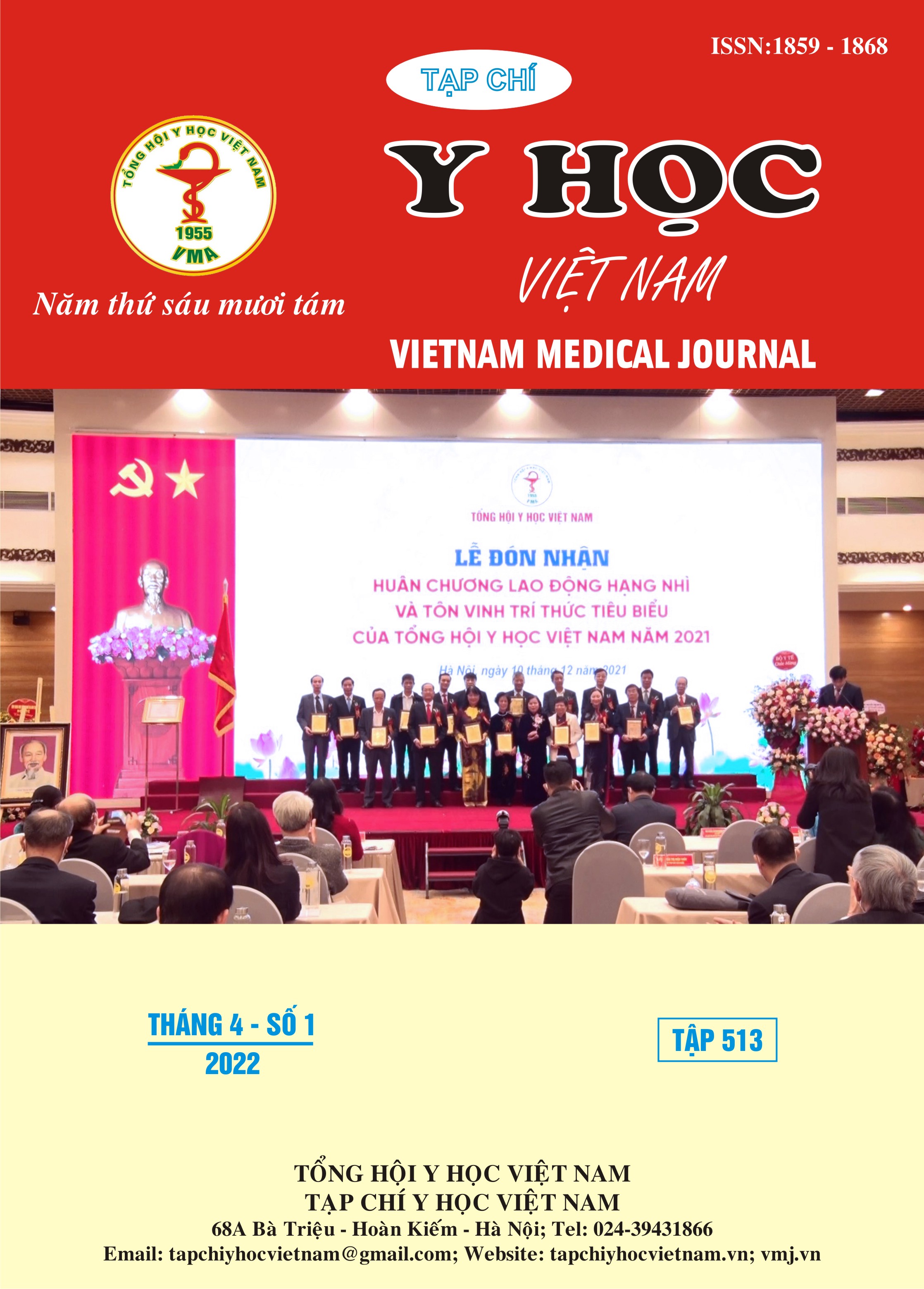NEUROLOGICAL COMPLICATIONS AFTER THORACIC AORTIC SURGERY WITH FROZEN ELEPHANT TRUNK TECHNIQUE
Main Article Content
Abstract
Objectives: To study the neurological complications occurring in patients, underwent surgery for thoracic aortic disease using frozen elephant trunk (FET) technique at Viet Duc university hospital and review the literature. Methods: Retrospective description of clinical cases undergoing surgery for thoracic aortic disease with FET technique with neurological complications from 12/2019 to 12/2021. Results: Among 42 cases of complex thoracic aortic disease operated with FET technique, there were several types of neurological complications, including: 1 case (2.4%) temporary spinal cord paralysis; 3 cases (7.1%) of cerebrovascular accident; 5 cases (11.9%) had transient neurological dysfunction (excitement, delirium...). There were no cases of recurrent laryngeal or phrenic nerve paralysis. One death (2.4%) was in a deep coma after a cerebrovascular accident. Conclusion: Neurological complications after surgery for thoracic aortic disease using FET technique at Viet Duc hospital are rare and are equivalent to those published in the world, in which dysfunction transient neurosis (excitatory) is the most common.
Article Details
Keywords
frozen elephant trunk (FET), neurological complications, aortic disease, Viet Duc
References
2. Czerny M, Schmidli J, Adler S, et al. Current options and recommendations for the treatment of thoracic aortic pathologies involving the aortic arch: an expert consensus document of the European Association for Cardio-Thoracic surgery (EACTS) and the European Society for Vascular Surgery (ESVS). Eur J Cardio-Thorac Surg Off J Eur Assoc Cardio-Thorac Surg. 2019;55(1):133-162. doi:10.1093/ejcts/ezy313
3. Damberg A, Schälte G, Autschbach R, Hoffman A. Safety and pitfalls in frozen elephant trunk implantation. Ann Cardiothorac Surg. 2013;2 (5):669-676.doi:10.3978/j.issn.2225-319X. 2013.09.16
4. Preventza O, Liao JL, Olive JK, et al. Neurologic complications after the frozen elephant trunk procedure: A meta-analysis of more than 3000 patients. J Thorac Cardiovasc Surg. 2020;160 (1):20-33.e4. doi:10.1016/j.jtcvs.2019.10.031
5. Shrestha M, Bachet J, Bavaria J, et al. Current status and recommendations for use of the frozen elephant trunk technique: a position paper by the Vascular Domain of EACTS. Eur J Cardio-Thorac Surg Off J Eur Assoc Cardio-Thorac Surg. 2015;47(5):759-769. doi:10.1093/ejcts/ezv085
6. Poon SS, Tian DH, Yan T, et al. Frozen elephant trunk does not increase incidence of paraplegia in patients with acute type A aortic dissection. J Thorac Cardiovasc Surg. 2020;159(4):1189-1196.e1. doi:10.1016/j.jtcvs.2019.03.097
7. Hohri Y, Yamasaki T, Matsuzaki Y, Hiramatsu T. Early and mid-term outcome of frozen elephant trunk using spinal cord protective perfusion strategy for acute type A aortic dissection. Gen Thorac Cardiovasc Surg. 2020;68(10):1119-1127. doi:10.1007/s11748-020-01328-z
8. Zhao H, Wen D, Duan W, An R, Li J, Zheng M. Identification of CTA-Based Predictive Findings for Temporary and Permanent Neurological Dysfunction after Repair in Acute Type A Aortic Dissection. Sci Rep. 2018;8(1):9740. doi:10.1038/ s41598-018-28152-z.


